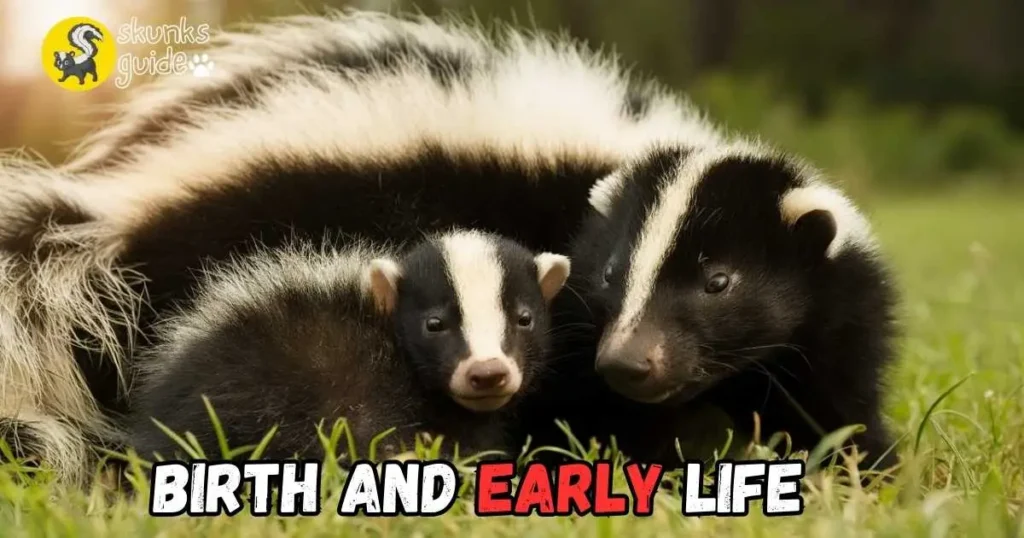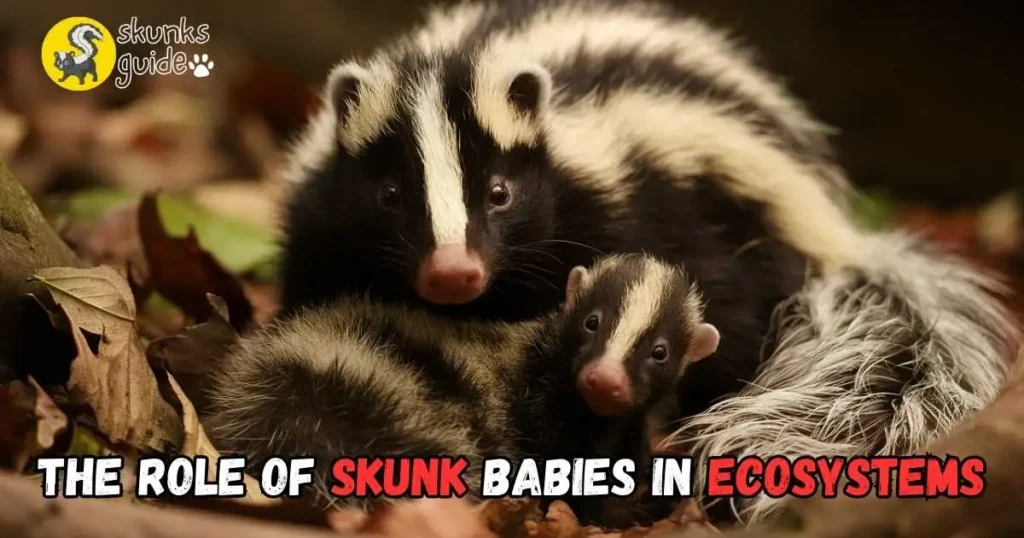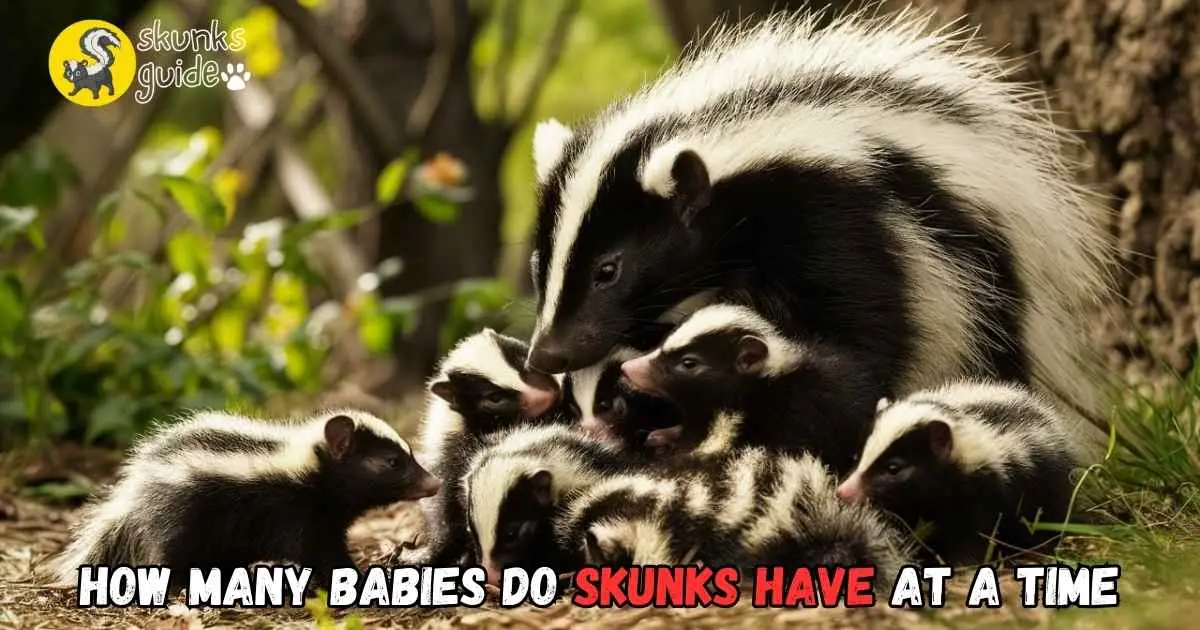How Many Babies Do Skunks Have at a Time?
Skunks often give birth to 4 to 7 babies, called kits, at a time! After years of observing skunks in nature, I’ve discovered that their litter size can depend on things like how much food is around and what their habitat is like. If you want to learn more about how skunks raise their babies and what helps them survive, this article has all the info you need.
Skunk Litters Unveiled
Skunks are fascinating creatures. They often surprise us with their unique habits. One of the most interesting aspects is their reproduction. Let’s explore how many babies skunks have at a time.
Average Litter Size
Skunk litter sizes can vary. Typically, a female skunk gives birth to:
| Species | Average Litter Size |
|---|---|
| Striped Skunk | 4 to 7 kits |
| Spotted Skunk | 2 to 6 kits |
The striped skunk usually has larger litters. They can have between 4 to 7 kits. On the other hand, spotted skunks tend to have smaller litters, averaging 2 to 6 kits.
Factors Influencing Litter Size
Several factors can influence the size of a skunk litter:
- Species: Different species have unique litter sizes.
- Age: Older females often have larger litters.
- Health: Healthy skunks tend to produce more kits.
- Environment: Availability of food affects reproduction.
- Season: Litter sizes may vary by season.
Understanding these factors helps us appreciate skunk reproduction. Each element plays a role in how many babies a skunk will have. Skunks, while often misunderstood, contribute significantly to their ecosystems.
Birth And Early Life
Skunk kits have a fascinating start to life. Their birth and early days are crucial for survival. Mother skunks are caring and protective. They give birth to several kits at once. Understanding their journey helps us appreciate these unique animals.

The Birthing Process
The birthing process for skunks is quite special. Here are some key points:
- Skunks typically give birth in late spring.
- The average litter size is 4 to 7 kits.
- Birth occurs after a gestation period of about 60-75 days.
- Mother skunks find safe dens for delivery.
- Kits are born blind and helpless.
Mother skunks care for their young in the den. They nurse and keep them warm. Kits rely on their mother for food and safety.
Growth Milestones In Skunk Kits
Skunk kits grow quickly. Here are their growth milestones:
| Age | Milestone |
|---|---|
| 1 week | Eyes and ears closed. |
| 2-3 weeks | Eyes and ears open. |
| 4 weeks | Start to walk and explore. |
| 6-8 weeks | Begin eating solid food. |
| 10-12 weeks | Ready to leave the den. |
These milestones are vital for their development. Kits learn survival skills from their mother. They play and practice hunting as they grow.
Survival Rates And Challenges
Skunk babies face many challenges after birth. Their survival rates depend on various factors. Understanding these factors helps us appreciate their life cycle.
Natural Predators
Skunk kits are vulnerable to numerous predators. Here are some common threats:
- Owls – Silent hunters that can swoop in unnoticed.
- Foxes – Quick and crafty, they hunt skunks at night.
- Coyotes – Opportunistic hunters, they attack in packs.
- Domestic Dogs – Many dogs chase skunks out of instinct.
These predators target skunk kits. Their strong sense of smell does not protect them. Awareness of their surroundings is crucial.
Human Impact On Skunk Populations
Humans significantly affect skunk survival. Here are some ways this occurs:
| Human Impact | Effect on Skunks |
|---|---|
| Urbanization | Loss of habitat and food sources. |
| Vehicle Collisions | Increased mortality rates among skunks. |
| Pesticides | Poisoning affects health and reproduction. |
| Hunting | Reduces population numbers. |
Understanding human impact helps in conservation efforts. Protecting skunks ensures their survival rates improve.
Variations Among Species
Skunks display fascinating differences in litter sizes. These variations depend on the species. Understanding these differences reveals much about their reproduction.
Spotlight On Different Skunk Species
There are several skunk species, each with unique traits. Here are a few notable ones:
- Striped Skunk – Common in North America.
- Spotted Skunk – Smaller and more agile.
- Hooded Skunk – Known for its distinctive fur.
- Mexican Skunk – Found in parts of Mexico and the U.S.
Comparing Litter Sizes
Litter sizes vary among skunk species. Here’s a quick comparison:
| Skunk Species | Average Litter Size |
|---|---|
| Striped Skunk | 4 to 7 babies |
| Spotted Skunk | 2 to 5 babies |
| Hooded Skunk | 3 to 6 babies |
| Mexican Skunk | 4 to 8 babies |
Factors like habitat and food availability influence these sizes. Skunks adapt their litter sizes based on environmental conditions.
Understanding these variations helps in wildlife conservation efforts. Protecting different species ensures their survival and biodiversity.
The Role Of Skunk Babies In Ecosystems
Skunk babies, or kits, play an important role in ecosystems. They contribute to pest control and promote biodiversity. Understanding their impact helps us appreciate these unique creatures.

Skunks As Pest Controllers
Skunks are natural pest controllers. They eat a variety of pests, keeping populations in check. Their diet includes:
- Insects
- Grubs
- Rodents
- Snakes
By controlling these pests, skunks benefit gardens and farms. Their presence reduces the need for chemical pesticides. This makes the environment healthier.
Biodiversity And Skunk Populations
Skunk babies contribute to the biodiversity of their habitats. Healthy skunk populations support various species. A diverse ecosystem has many benefits:
- Improved soil health
- Better water quality
- Increased resilience to diseases
Skunks also provide food for larger predators. Birds of prey and coyotes rely on skunks as a food source. This interdependence helps maintain balance in nature.
In summary, skunk babies are vital for healthy ecosystems. They help control pests and promote biodiversity.
Conservation And Protection
Skunks play a vital role in their ecosystems. Protecting them ensures a balanced environment. Understanding threats and conservation efforts is essential.
Threats To Skunk Habitats
Skunks face many dangers in their habitats. Here are the main threats:
- Urban Development: Cities expand into skunk habitats.
- Road Traffic: Many skunks die on roads.
- Pesticides: Chemicals harm skunks and their food sources.
- Climate Change: Alters their natural habitats.
These threats lead to declining skunk populations. Protecting their habitats is crucial for their survival.
Conservation Efforts For Skunks
Many organizations work to protect skunks. Here are key conservation efforts:
- Habitat Restoration: Replanting native plants helps skunks.
- Public Education: Teaching people about skunk importance.
- Wildlife Corridors: Creating safe paths for skunks across roads.
- Regulating Pesticides: Limiting harmful chemicals helps skunks thrive.
Community involvement boosts these efforts. Everyone can help protect skunks. Simple actions like planting native plants make a difference.
Frequently Asked Questions
How Long Does A Mother Skunk Stay With Her Baby?
A mother skunk typically stays with her babies for about 8 to 10 weeks. During this time, she nurses and teaches them essential survival skills. After this period, the young skunks gradually become independent and start foraging on their own.
What Month Do Skunks Have Babies?
Skunks typically have babies in late spring, around April to June. This is when they mate and give birth to litters of two to seven kits. These young skunks are born blind and helpless, relying on their mothers for care and protection during their early weeks.
Will Baby Skunks Spray You?
Yes, baby skunks can spray. They possess the ability to spray from a young age, though they may not do so effectively. They often rely on other defense mechanisms first. Avoid approaching or startling them to reduce the risk of being sprayed.
Conclusion
Skunks typically have between 4 to 7 babies in a litter. This number can vary based on factors like the species and environmental conditions. Understanding skunk reproduction helps us appreciate their role in the ecosystem. By respecting their habitats, we can ensure these fascinating creatures thrive for future generations.

